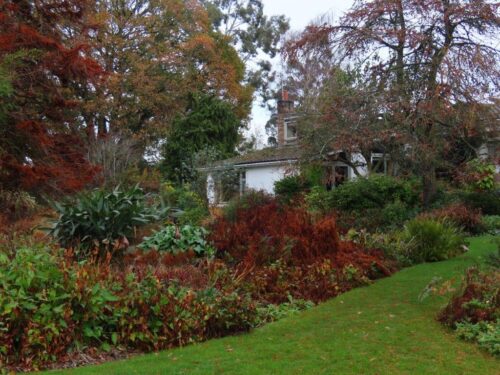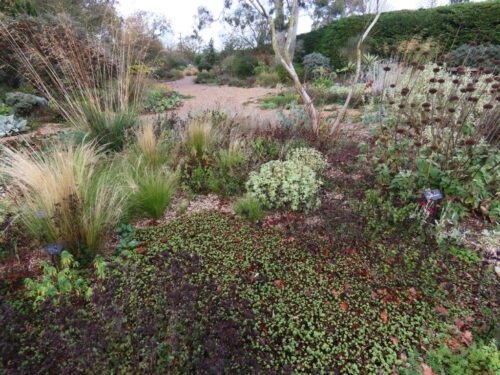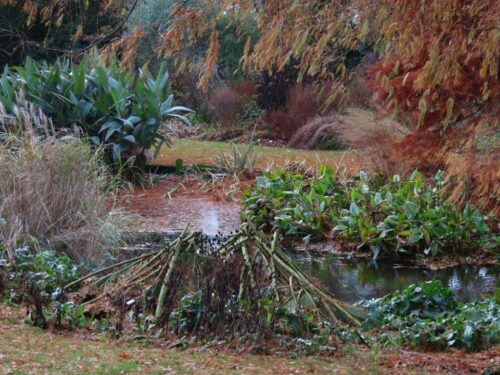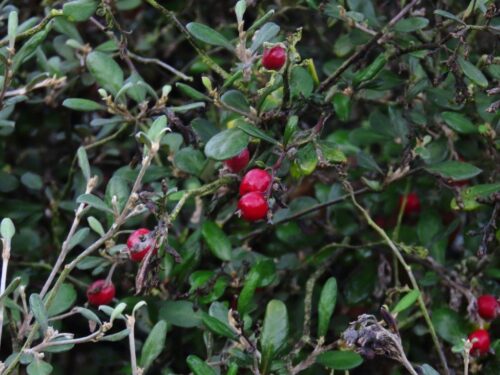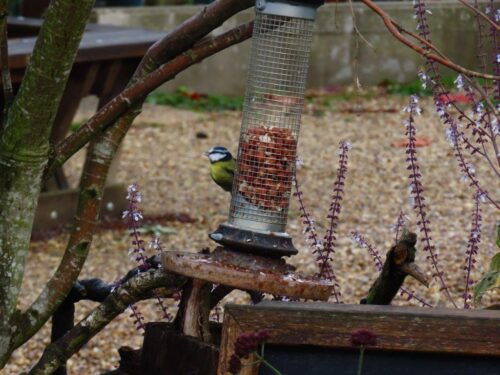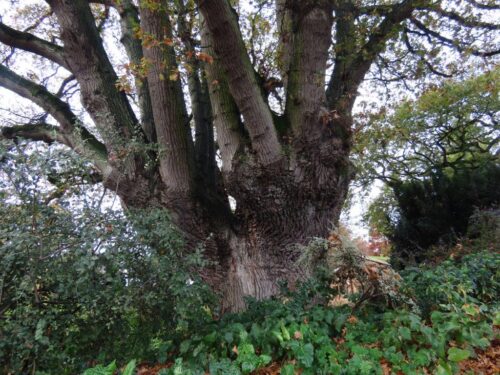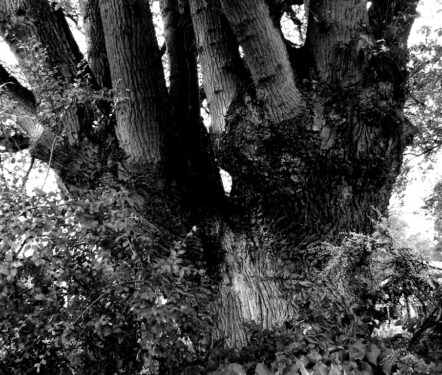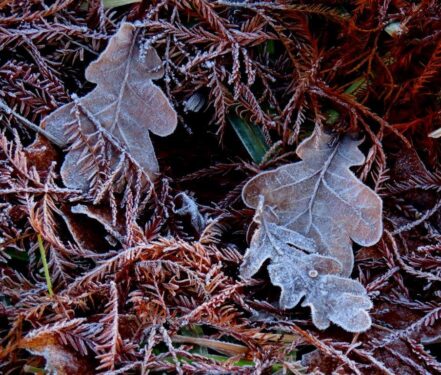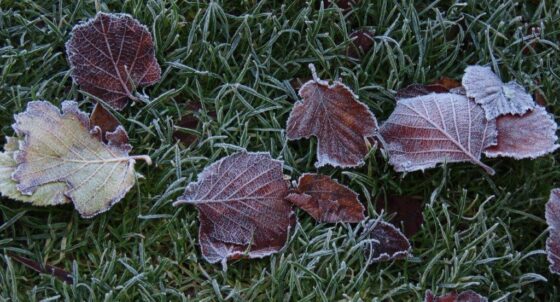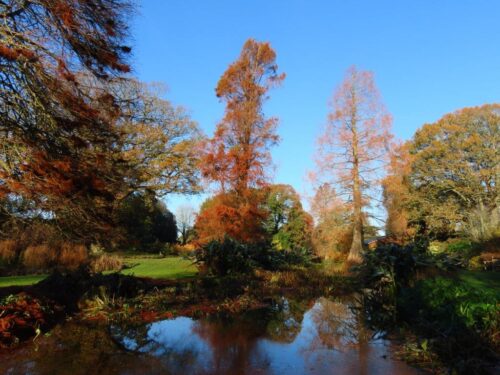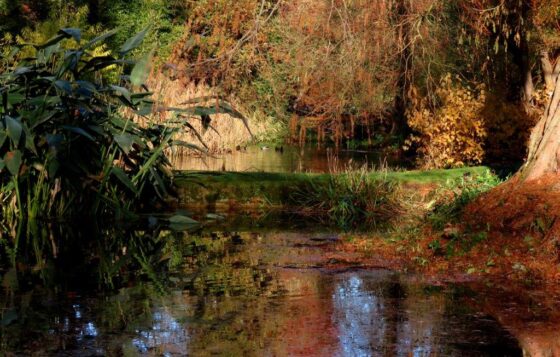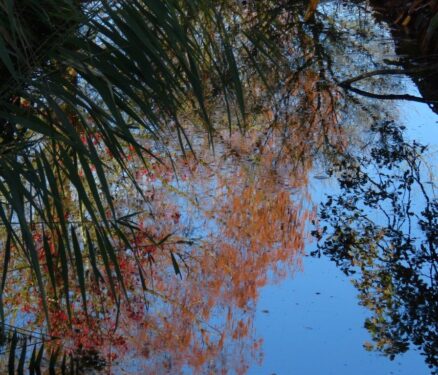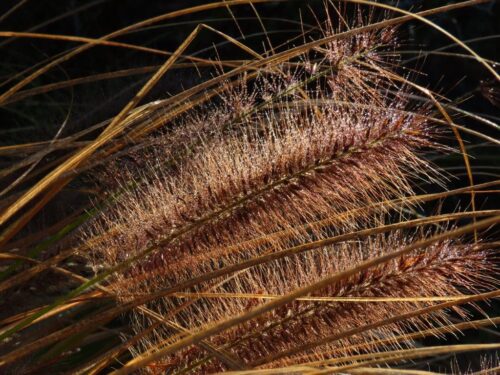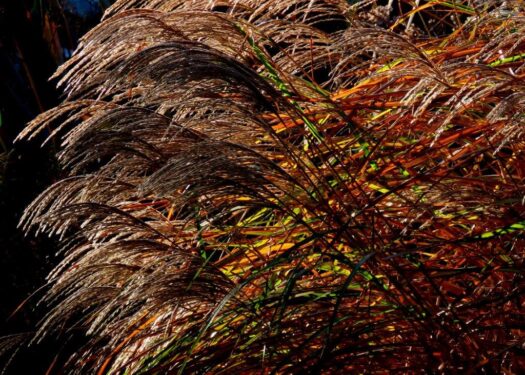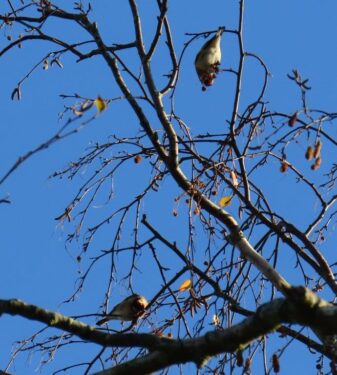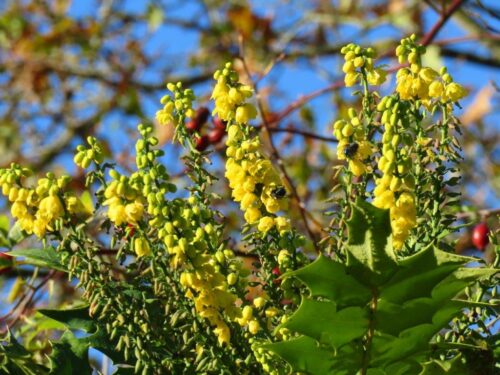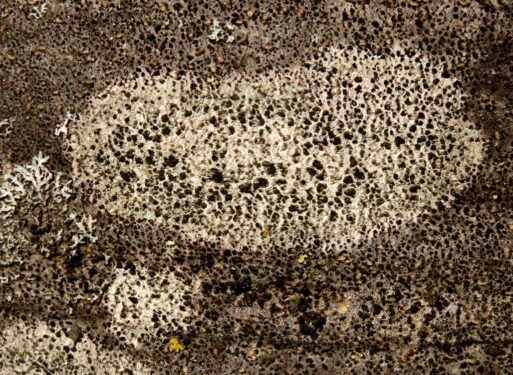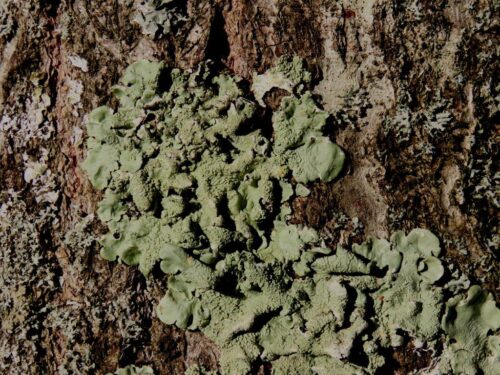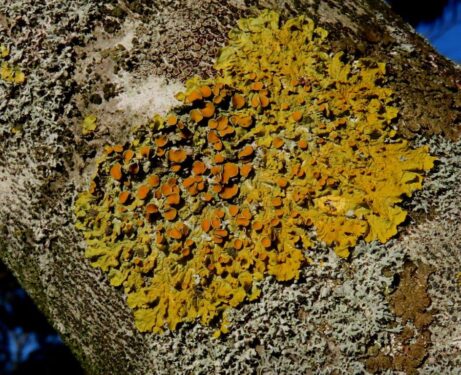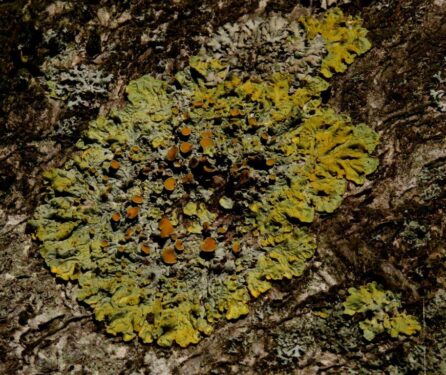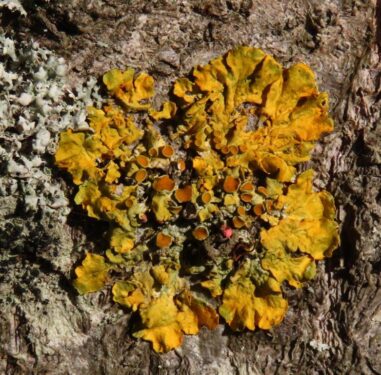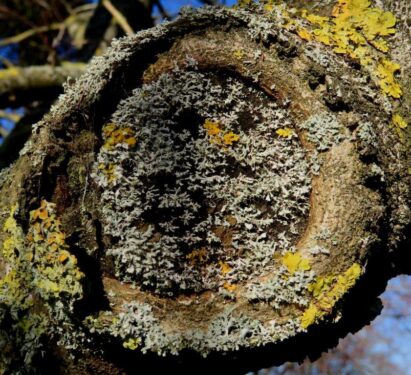My two visits at the end of November could hardly have been more different. The first was a wet day, very wet indeed save for a brief dry hour giving me the chance to savour the winter browns under leaden skies.
Leaf-fall in the previous wind and heavy rain coated every surface of the garden with the dejecta of Swamp Cypress, Dawn Redwood, Ginkgo and others, their groundscapes merging seamlessly into the gloom.
Too cold by far for any insect interest in the remnant flowers…
… and even the berries seemed not to be attracting the birds: the feeding station by the tearoom was the epicentre of activity.
But our oldest garden inhabitant looked magnificent, its grandeur undiminished by the lack of light.
In fact removing all colour from the scene draws attention to the sculptural qualities of its ancient bole:
A week later it was all very different. The intervening days had seen a fair amount of rain, along with a couple of frosts, the first of the season. But the sky was blue, Robins were singing and the sun was warm, although even at lunchtime frost still lingered in the shady corners.
Winter sun coming from a low angle served to intensify every vestige of colour in the landscapes and plantscapes and add drama to the shapes and shadows:
Birds still visited the fast-food joint, but were also active throughout the garden. Large numbers of Blackbirds, with a few Mistle Thrushes and Fieldfares, were devouring berries, with Jays chasing acorns…
… and Goldfinches, Redpolls and Chaffinches eating seeds high in the Birchtops.
In the Gravel Garden, a fresh flush of Sickle-leaved Hare’s-ear formed a flowery filigree, as Seven-spot Ladybirds carried on resolutely hunting aphids.
But the flower of the moment was Mahonia. In full sunlight and full bloom, its Lily-of-the-valley scent pooled intoxicatingly in the still air and it was teeming with flies, especially Calliphora bluebottles, feeding at the flowers and basking on the leaves. Many might not get excited by such creatures, but we do! They pollinate as well as any bee, they are food for insectivorous birds, and without their maggots we would be knee-deep in unrotted animal carcases…
It is at this time of year, when leaves are off most of the trees and trunks illuminated by winterlight, that thoughts turn to lichens. Just a few from a wander round the car park included two that seem to be pretty scarce in Essex. Ramalina fastigiata, extinct in Essex in the 1970s due the the impacts of air pollution, has shown a slow recolonization since, but mostly in the westernmost fringes of the county – the latest map from the British Lichen Society shows only a single spot in the Tendring Peninsula, around Weeley.
There is a similar dearth of Lecidella elaeochroma records locally, with just two in our neck of the woods, from just west of Clacton and Elmstead Market respectively.
Then there were the commoner species, grey ones such as Physcia adscendens, Physcia tenella, Punctelia subrudecta and Flavoparmelia caperata…
… along with the very common Sunburst Lichen Xanthoria parietina, those in full sunlight more golden than those in partial shade, and one showing the pink spot of the parasitic fungus Illosporiopsis christiansenii, another apparent rarity in Essex with the National Biodiversity Network Atlas showing just one Essex site, near Southend.
Of course, comments about the scarcity of lichens and lichenicolous fungi should always be caveated by the fact that few folk record them, and perhaps their apparent distribution actually reflects the distribution of active naturalists. Nevertheless, despite their lack of popularity, lichens are wonderful structures and form lovely lichenscapes that add interest and splashes of colour to the winter scene. But please don’t feel you have to stay in the car park: the garden has so much more to offer at every time of year!

